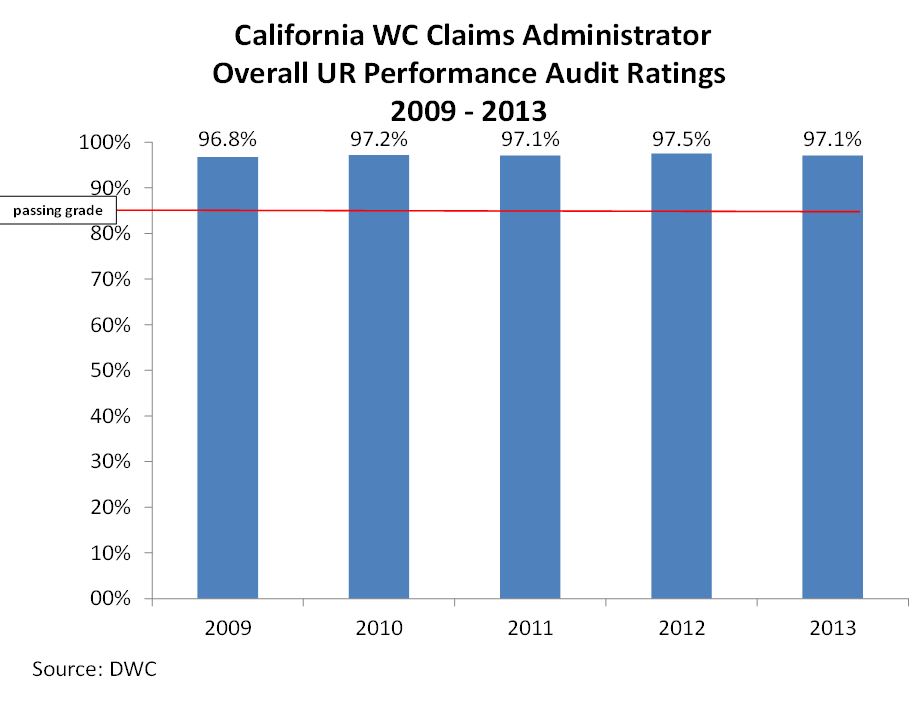Results of 2009 to 2013 state audits of California workers’ comp utilization review (UR) programs, which check the timeliness, content and delivery of responses to requests for authorizations of treatment (RFAs) for injured workers, show that overall, claims administrators earned an average compliance score of 97.2%, well above the 85% benchmark set as a passing grade by the Division of Workers’ Compensation (DWC), with the overall average ratings varying less than 1 percentage point in each of the five years measured.
California workers’ compensation claims administrators are required by law to establish and maintain a UR process for workers’ compensation medical treatment. That process must be guided by written policies and procedures that are consistent with the Medical Treatment Utilization Schedule adopted by the DWC and overseen by a medical director. State regulations set forth the key terms and applicability of the UR process, the medical criteria for UR, time frames, notice requirements and procedures. Since 2007, the DWC has been auditing claims administrator’s UR programs to make sure they comply with the state regulations, though some in the community have asserted that since the advent of mandatory UR, claims administrators have done a poor job of responding to treatment requests, a problem they say, made worse by 2012 legislative reforms that revised the medical dispute resolution process. To test that notion, CWCI looked at results of DWC audits of claims administrator UR programs from 2009 through 2013 to assess the efficiency of their UR processes in terms of the timeliness, content and delivery of responses to treatment requests.
During UR audits, DWC investigators review a random sample of RFAs drawn from all those submitted to the claims administrator in the prior 3 months. Altogether, DWC’s 2009-2013 audits examined 280 different claims administrator locations throughout California and reviewed 11,192 RFAs. State regulations require the audit results and a UR performance rating for each claim location be posted on the DWC website, so CWCI used this data to calculate the average claims administrator UR performance rating for each of the 5 years, and for the entire 2009-2013 period.

The results show claims administrators had remarkably consistent UR compliance rates from 2009 through 2013, with less than 1 percentage point variance across each of the five years, and an overall compliance rate averaging 97.2%, far above the 85% compliance rate which the state has set as a passing grade.
In addition to the claims administrators’ overall UR performance ratings, the Institute calculated the average ratings for the timeliness, content and distribution of RFA responses. As with the overall results, the review of the DWC ratings for each of the three components found that across the board and for each of the five years studied, claims administrators met the timeliness, content and distribution requirements for responding to requests for authorization of treatment, with 5-year averages of nearly 93% for timeliness; and more than 99% for content and delivery.
The DWC’s UR audit results from the 2014 investigations are expected to be released in the near future, and they too will be posted on the Division’s website. In the meantime, the Institute has published a Spotlight Report with additional data and analyses on the UR audit findings from the most recent five years available. That report, California Workers’ Compensation Claims Administrator Utilization Review Audit Results: 2009 – 2013, can be found in the Research section of the Institute’s website, http://www.cwci.org/.
